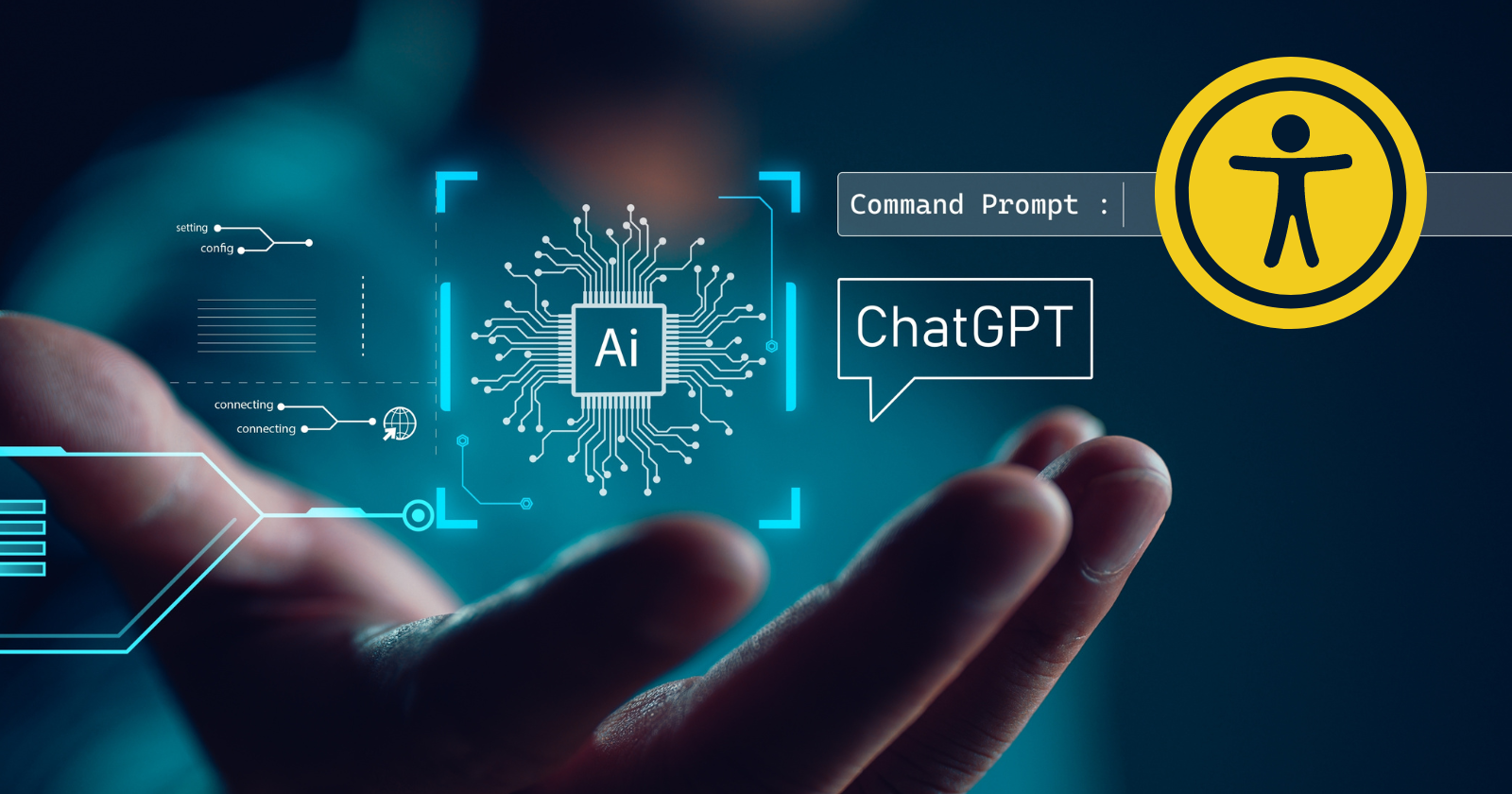
I was honored to be asked to participate in the keynote for WP Engine’s DE{CODE} conference for developers. The keynote, hosted by Jason Cohen, WP Engine Chief Innovation Officer and Founder, and Luke Patterson, Product Manager at WP Engine, discussed AI and the future of WordPress development. It included three 5-minute lightning talks, and my segment, unsurprisingly, focused on AI and the future of accessibility.
For those who missed last week’s conference, the keynote video is available on YouTube. I’m also posting the transcript of my talk below with links to relevant resources.
It’s hard to squeeze all my thoughts into five minutes. If you want a longer take on AI’s impact on web accessibility and accessibility in general, stay tuned for next week’s Accessibility Craft podcast episode in which I discuss AI and accessibility with my partners, Chris Hinds and Steve Jones.
Have thoughts about AI’s impact on accessibility? Tag us on LinkedIn or Twitter with your thoughts.
Article continued below.
Stay on top of web accessibility news and best practices.
Join our email list to get notified of changes to website accessibility laws, WordPress accessibility resources, and accessibility webinar invitations in your inbox.
AI and the Future of Accessibility Talk
On why AI is appealing:
Building an accessible WordPress site means building a website that all people can use regardless of their abilities or assistive devices. To do this, you must take into account accessibility at all phases of a project, from the color palette you set during design to the code you write, the plugins you select, and how content is entered in the editor.
Creating a truly accessible website can be a labor of love. Many of us are trying to optimize our billable hours, so using AI to speed up the accessibility portions of a project can sound very enticing.
And there are some brilliant ways AI has made the web more accessible to everyone.
How AI is helping accessibility:
Ten years ago, if you couldn’t hear a video on the web – whether because you were deaf or you were sitting on an airplane and forgot your headphones – you would have missed the message completely. Today, AI is captioning videos if the creator didn’t; making that content accessible for the 85% of videos that are watched without sound. We’ve all probably benefited from an AI-captioned video this week.
With every CAPTCHA submission, you’re helping to train AI image recognition. This gets us closer to AI tools being able to describe images to blind and visually impaired users if the alternative text is missing.
There are generative AI tools that show potential for improving web accessibility. GitHub Copilot can suggest accessibility improvements to developers as they code. ChatGPT has the ability to summarize complex text for someone with cognitive or reading disabilities.
I say these tools have the potential to make the web more accessible with an emphasis on potential because, while we’re making strides toward AI accessibility, we’re not there yet.
AI can cause accessibility problems:
Automated captions frequently contain mistakes. AI-generated alt text usually misses key context-based details completely. Copilot is trained on code from millions of sites, 96.3% of which have easily detectible accessibility problems. As a result, Copilot is just as likely (or more likely) to suggest code with accessibility errors than accessible code. We’ve all read the stories (or experienced it ourselves) of ChatGPT giving completely inaccurate information when asked to summarize or explain something.
Which brings me to accessibility overlays. I can’t discuss AI and accessibility without mentioning the most contentious example of AI in the accessibility community: tools that are added to inaccessible websites in an effort to remediate everything from missing alt text to color contrast, incorrect heading order, and more.
These tools can fix some accessibility problems on websites. But, they also add problems, too, and people with disabilities, especially screen reader users, are increasingly speaking up against relying on accessibility overlays.
AI, and especially automated accessibility testing tools like our Accessibility Checker plugin, have a role to play in making a more accessible web. They can fill the gaps where a website creator has failed and teach us to become better developers and content creators who build accessibility-first. But, at least where we are today, AI is not a bandaid to be slapped over inaccessible code.
The future of AI and accessibility:
Looking ahead, there are more creative ways AI will open up the web for people with disabilities. Researchers at Ohio State have been experimenting with developing AI “web agents” to perform tasks on the internet for people with disabilities. Think: personal assistants like Siri or Alexa who can complete complex tasks with a single voice command: “Hey, agent, book me a round-trip ticket to Italy in June.”
For someone who previously had to navigate 14 steps in an inaccessible checkout process, this technology will radically improve not just their experience on the web but also their life.
As more focus is put on accessibility and AI is trained on more accessible examples, we’ll see better results in AI tools. AI-generated alt text is one area in particular to watch, especially plugins like AltText.ai that use image recognition in addition to referencing surrounding text to generate more contextually accurate image descriptions.
You can help AI accessibility
The best way to open your website to AI assistive technology and potential customers who use it is to provide a solid foundation based on semantic HTML.
If you haven’t yet, a good place to start is integrating automated testing into your workflow—whether that’s linting with axe-linter on GitHub PRs or running an accessibility checker in your WordPress website. Using AI tools to generate code, captions, or alt text can get you up and running quickly, but don’t forget to have a human check the bot’s work.
Small changes can make a big difference in the accessibility of a website. AI, with your assistance, has the potential to rapidly improve the internet’s usability for everyone.